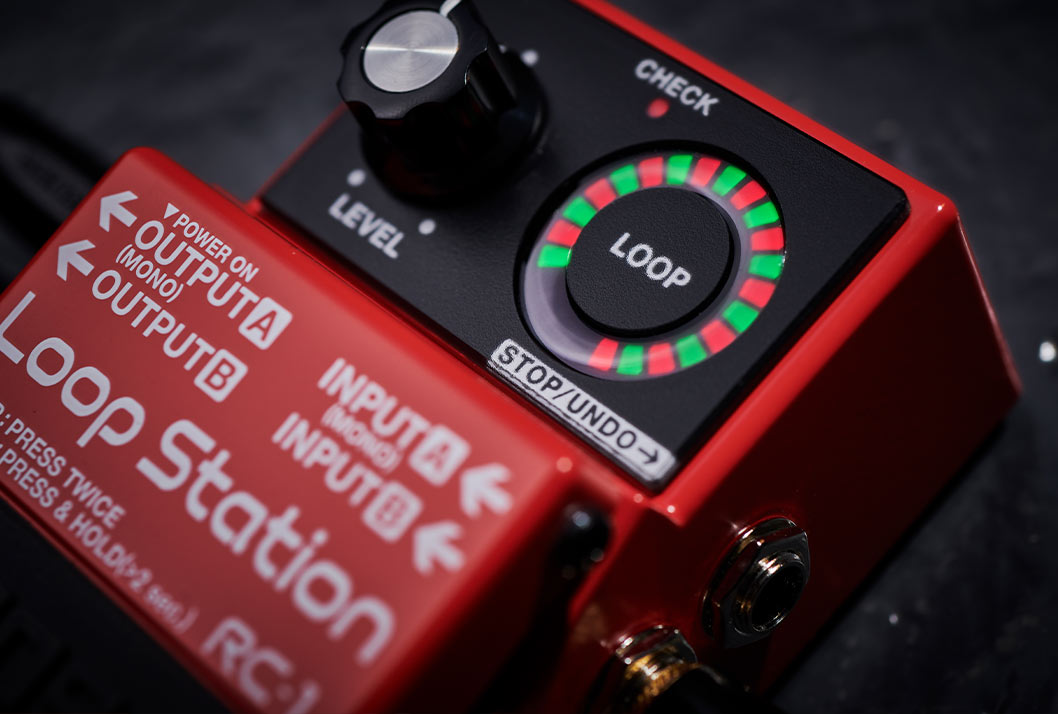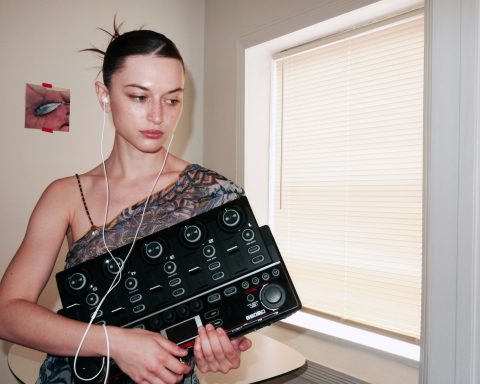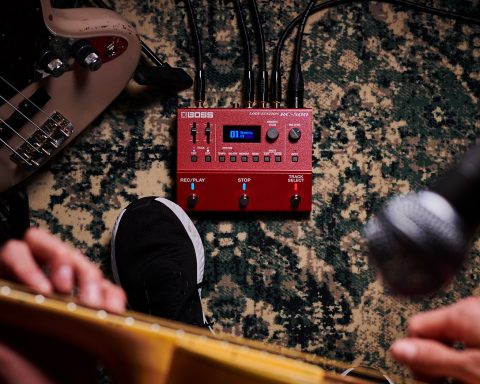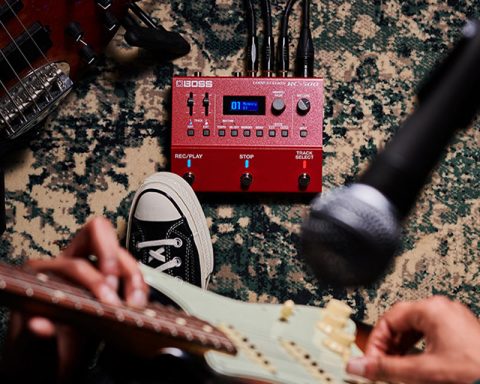Although a loop pedal may not be first on your list of must-have pedals, after using one, you’ll find it will become one of the most essential pedals on your board. Loop pedals have revolutionized the way musicians write and perform music. Whether you’re a singer layering harmonies, a guitarist crafting chord progression, a beatboxer building rhythmic textures, or a multi-instrumentalist constructing full compositions solo, loop pedals help you unlock new levels of creativity because they essentially let you create full compositions, songs, and live shows all by yourself. In this ultimate companion to looping for beginners, we answer all your questions about how to use a loop pedal.
Endless Possibilities
This guide will cover how loop pedals work, the different types available, and how they can be used across various musical disciplines. We’ll give you some ideas on how best to use them, as well as links to in-depth guides tailored to specific loop pedal users such as vocalists, beatboxers, electric and acoustic guitarists, bass players, and multi-instrumentalists. If you play music, anyone can benefit from looping. But first, let’s get the basics down.
Loop Pedals Basics
A loop pedal records a section of your performance, whether a chord progression, melody, or rhythm, and plays it back on a loop. You can layer additional parts over it, creating a complete real-time arrangement without additional musicians. That’s precisely what solo performers like Ed Sheeran, Tash Sultana, and Julien Baker have popularized. They’re an invaluable tool for all types of musicians. Radiohead’s Ed O’Brien, Ariana Grande, Victor Wooten, and Reinhardt Buhr all use loop pedals to add depth to their live and recorded sound and use them as complete songwriting tools and additions to their performance.
How a Loop Pedal Works
All BOSS loop pedals operate with three basic steps:
- Record: Press the pedal to start recording your phrase. Play or sing your part, then press the pedal again to stop recording, which triggers the loop.
- Playback: The loop pedal will immediately begin repeatedly playing the recorded phrase.
- Layer: While the loop plays, press the pedal again to record another layer on top. This can be a harmony, a melody, a rhythm, or any other sound you want to add. Easy. Essentially, you play what you want, and the loop pedal loops it, and you build over the top of it! It’s like playing with a full band on a pedal.
Why Do You Need a Loop Pedal?
A loop pedal is one of the most versatile tools you can own. Here are four reasons why you should consider a loop pedal:
Improved Practice Sessions
Recording and looping allow you to listen back to your playing, refine your technique, and experiment with new ideas without the constraints of other band members.
Enhance Live Performances
Artists use looping to build live arrangements, allowing solo performers to create a full-band experience around a single artist or as an accompaniment to what they already play.
Songwriting Tool
Looping helps you structure songs, layer parts, and test different compositions in real time. This allows you to create cool parts for a track or discover parts of a song that don’t quite work over a solo or chord progression.
Creative Soundscapes
Just like Ariana Grande and Ed O’Brien, you can use a loop pedal to add harmonies, rhythms, or experimental textures that can transform your playing into something entirely new or help you build ethereal soundscapes that you can play over.
Many singer-songwriters use loop pedals to accompany themselves live. Instrumentalists can layer harmonies and counter-melodies to build a more dynamic performance. Watch how Ed O’Brien loops the atmospheric sounds on “Idioteque” and then leaves the loop running while he sings over it here.
Here, Ariana Grande gives a masterclass on using a loop pedal in a live performance to add incredible dynamics and cool elements to a song.
Floor-Based and Tabletop Loopers
You’ll see two types of loopers when trying to find out which looper is best for you—floor-based and tabletop loopers.
Here are the main differences:
- Floor-based loopers: These sit on the floor and are triggered with your feet. They are best for live bassists who need hands-free control. Models like the BOSS RC-1, RC-5, and RC-500 allow hands-free looping as you use your feet to trigger them.
- Tabletop loopers: These sit on desks and tabletops. They’re used more by beatboxers, vocalists, producers, and bassists experimenting with sound design. Beatboxers and vocalists prefer the BOSS RC-505mkII for its hands-on control and extended memory.
This is Brez using the RC-505mkII to build an entire song using his voice and showing the magic of Osc Bot, Sequencer, and Bounce feature.
Tips On Using a Looper Pedal
Using a looper pedal is straightforward once you master timing and layering. But you need to nail the basic steps first!
- Tap the pedal to start recording at the beginning of your phrase—begin on the one beat, so think 1,2,3,4 in your head, and then start precisely on the 1, as this ensures your loop is tight.
- Tap again to stop recording; the loop will now play back automatically.
- Overdub additional layers and build the song by playing over the loop while it cycles.
- Use effects or erase sections to refine your performance.
Timing is crucial. All BOSS loopers, except the BOSS RC-1, come with built-in metronomes or drum patterns to help keep your loops tight and in sync.
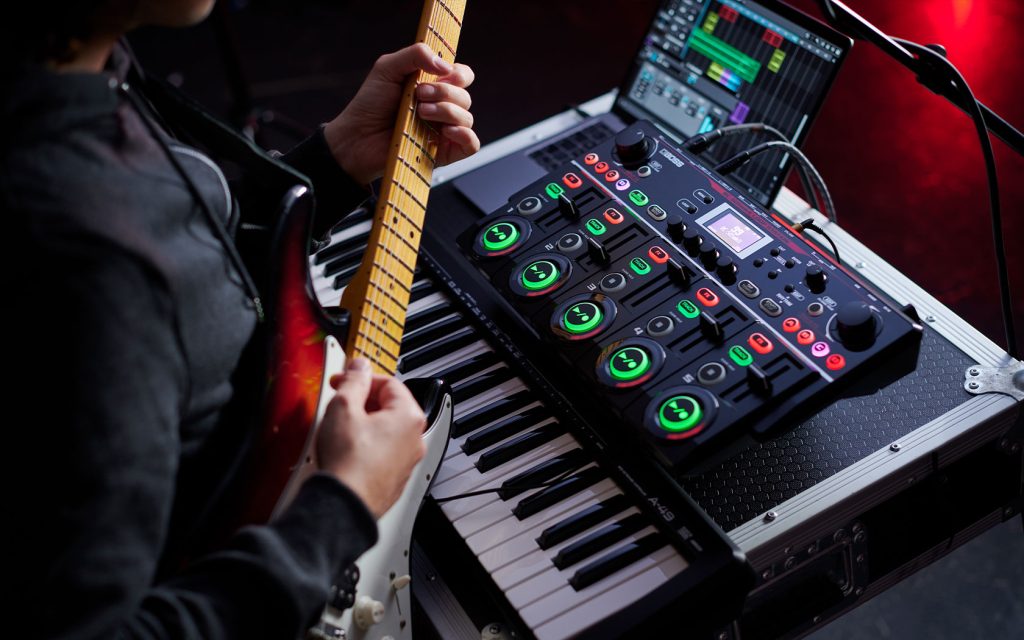
Advanced Techniques to Explore
Once you’re comfortable with the basics, you can explore more advanced techniques:
- Using Effects: Many BOSS loop pedals have built-in effects like reverb, delay, and modulation. Experiment with these to add depth and texture to your loops.
- Layering Harmonies: If you’re a vocalist, try layering harmonies over your main vocal line. This can create a rich, full sound.
- Creating Drum Beats: Guitarists and bassists can use their instruments to create percussive sounds and build drum beats with their loopers.
- Syncing with Other Gear: Some BOSS loop pedals have MIDI capabilities, allowing you to sync them with drum machines, synthesizers, and other devices.
For a complete list of BOSS loopers with the features explained, check out this article.
Where Does a Looper Pedal Go in Your Signal Chain?
The “best” placement of a Loop Station is at the end of your signal chain, as you want to loop everything you create.
Here’s a recommended setup, which is the “regular” way or most commonly accepted for guitar:
Guitar/vocal/synth → Pedals/Effects → Loop Pedal → Amp
- Putting a looper last in the chain ensures all effects are recorded within the loop and won’t be altered when switching settings mid-performance.
- Using an FX loop (for amps with an effects loop) allows the looper to capture preamp tones without muddying time-based effects.
Pro-tip: Watch out for feedback when looping distorted tones, especially at high volumes. Using a noise gate or adjusting amp positioning away from your guitar pickups can prevent unwanted noise from creeping into your loops.
BOSS Looper Pedals for Beginners, Intermediates and Pros
BOSS offers a range of loopers for different skill levels. Here are some of the best options:
For Beginners
- The BOSS RC-1 is a simple, reliable looper with 12 minutes of recording time and an easy-to-use interface. It is ideal for first-time loopers looking to explore basic looping.
- The BOSS RC-5 adds 32-bit sound quality, built-in drum patterns, and 99 memory slots, making it great for players with more flexibility.
For Intermediate Players
- The BOSS RC-500’s dual-track stereo looping, built-in effects, XLR input for vocals, and MIDI capabilities make it ideal for serious solo performers.
- The BOSS RC-10R combines looping with a built-in rhythm section, which is excellent for singer-songwriters who want more dynamic arrangements.
For Professionals
- The BOSS RC-600‘s six stereo tracks, deep MIDI control, extensive effects, and multiple input options make it the most powerful floor-based looper available.
- The BOSS RC-505mkII, the industry standard for tabletop loopers, is used by beatboxers, vocalists, and live electronic performers.
Here’s another article on choosing between BOSS Loop Stations.
Choosing the Right Loop Pedal
Your ideal loop pedal depends on your musical style and instrument. There’s no right or wrong answer, but certain loopers are better suited to different styles of players. Below are the best options for other musicians, along with links to detailed guides.
Best Loop Pedals for Acoustic Guitarists
Acoustic guitarists can layer chord progressions, percussive taps, and vocal harmonies. The BOSS RC-1 is a great place to start for beginners, while more advanced players prefer the BOSS RC-10R.
"Take your time to make the foundation or first loop of your vocals perfect before building additional layers."
Best Loop Pedals for Electric Guitarists
Electric guitarists use loopers for solo practice, creating backing tracks, or building ambient textures. The BOSS RC-5 and RC-600 are both great options. Please read the guide to see how they can help you unlock new sounds. Perhaps the most famous video of an electric guitarist using a loop pedal is the one below from Tash Sultana.
Best Loop Pedals for Singers and Vocalists
Singers and vocalists build harmonies, layer lead vocals, and create full arrangements with just their voices. The BOSS RC-500 and RC-505mkII are both popular choices. Learn more about how those pedals can help you elevate your voice.
Best Loop Pedals for Beatboxers
Beatboxers love the RC-505mkII for its vocal effects, complex layering capabilities, and the fact that you can build entire songs and use your voice as an actual instrument with just the effects built in. I’ve written a complete guide on beatboxing loopers to show you how beatboxers use loop pedals and explore what else you can do with that pedal.
Best Loop Pedals for Bass Players
Bass players use loop pedals to lock in grooves, improvise, and practice phrasing. The BOSS RC-5 and RC-10R are both great options. Again, click through to read about bass looping to see how those pedals can help you take your playing to the next level and set you apart from other bass players.
Best Loop Pedals for Multi-Instrumentalists and Performers
Multi-instrumentalists need multi-track loopers like the BOSS RC-600 or RC-505mkII. Learn more about how those pedals can help you easily switch between instruments and build full compositions.
Why Choose BOSS Loop Stations?
BOSS is a trusted name in the music industry. It is known for producing high-quality and durable pedals that artists of all styles rely on and use to build careers. BOSS pedals are user-friendly and versatile, making them an excellent choice for beginners and professionals.
The beauty of loop pedals is that they offer endless creative possibilities. Whether you’re just starting or a seasoned pro, you can use them to enhance your practice sessions, expand your songwriting approach, and make your live shows much more dynamic.
For more details on specific use cases, check out our in-depth guides on loop pedals for acoustic and electric guitarists, singers and vocalists, beatboxers, bass players, and multi-instrumentalists. To learn more about loop pedals for specific instruments, check out these guides:
- The Complete Guide to Loop Pedals for Singers and Vocalists
- The Complete Guide to Loop Pedals for Bass Players
- The Complete Guide to Loop Pedals for Multi-Instrumentalists and Performers
- The Complete Guide to Loop Pedals for Electric Guitarists
- The Complete Guide to Tabletop Loopers and Loop Pedals for Beatboxers
- The Complete Guide to Loop Pedals for Acoustic Guitarists
Want to dive deeper into looping? Visit our Loop Station hub for more insights, tips, and resources.
